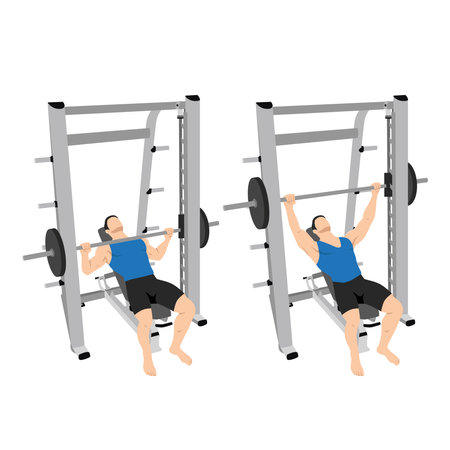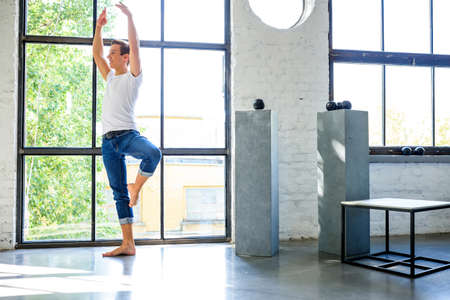Understanding the Benefits of Home Workouts
For many in the UK, carving out time for fitness can be a real challenge between work, social commitments, and unpredictable British weather. Embracing home workouts not only sidesteps the hassle of commuting to the gym but also fits seamlessly into daily life. Exercising at home offers a flexible routine that can be tailored to your schedule, whether you’re an early riser or prefer to move after work. Physically, regular movement helps boost cardiovascular health, strengthen muscles, and improve posture—particularly valuable for those who spend long hours at a desk or working from home. On the mental health front, exercise is proven to elevate mood and reduce stress levels. With the comfort of your own space and the freedom to set your pace, home workouts create an environment where you can focus on your wellbeing without feeling self-conscious. For British beginners, this means building healthy habits with minimal barriers—rain or shine.
Creating Your Ideal Indoor Workout Space
If you’re just starting out with home workouts in the UK, making the most of your living space is key. British homes are often cosy and compact, but with a little creativity, you can carve out a spot that’s both practical and inspiring. Here are some tips to help you set up a safe, motivating, and convenient indoor workout area—no matter the size of your flat or house.
Making the Most of Limited Space
Space constraints needn’t hold you back from building strength and stamina at home. Consider multi-purpose furniture, foldable equipment, and clever storage solutions to maximise every square foot. Below is a quick guide to help you adapt any British living room or bedroom:
| Challenge | Solution | Tip |
|---|---|---|
| Lack of floor space | Use foldable mats or resistance bands that tuck away easily | Store kit under the bed or sofa when not in use |
| No dedicated exercise room | Create a ‘workout corner’ by rearranging furniture temporarily | Choose a well-lit spot near a window for natural energy boost |
| Noise concerns (especially in flats) | Opt for low-impact routines like yoga or Pilates | Add soft rugs or mats to absorb sound and protect joints |
Prioritising Safety and Comfort
Your safety comes first. Always check there’s enough clearance around you before starting an exercise session—watch out for coffee tables, lamps, and low ceilings. Invest in non-slip mats, especially if you have wooden floors typical of many British homes. Keep a bottle of water handy and ensure good ventilation by cracking open a window if possible.
Motivation: Setting the Right Atmosphere
A motivating atmosphere can make all the difference. Put on your favourite playlist, set up a small speaker, or light a scented candle for a sense of calm. If you’re working out in shared accommodation, communicate your routine with flatmates so everyone’s on board. You might even find a new workout buddy!
Convenience: Keeping It Simple and Accessible
The easier it is to start your workout, the more likely youll stick with it. Keep your go-to equipment visible and ready—perhaps tucked into an attractive basket or neatly stacked in one corner. Schedule sessions at regular times so they become part of your daily rhythm, fitting seamlessly between work-from-home calls and tea breaks.

3. Essential Kit and Everyday Alternatives
Starting your home workout journey doesn’t mean you need to splash out on expensive gym equipment straight away. For beginners, a few basic pieces of kit can go a long way towards building both strength and stamina indoors. Here’s a quick guide to what’s worth investing in—and how you can get creative with everyday items found in most UK homes.
Must-Have Basics
If you’re looking to buy some essential kit, consider starting with a yoga mat for comfort and grip, a pair of light dumbbells or resistance bands for adding intensity, and perhaps a skipping rope for cardio. These compact items are easy to store and can be used for a variety of exercises.
Clever Household Substitutions
No kit? No problem. There are plenty of clever swaps using household items that work just as well, especially when you’re just beginning. Try using tinned beans or water bottles as makeshift dumbbells, sturdy dining chairs for tricep dips or step-ups, and a rolled-up towel in place of a yoga mat. Even stairs can be used for effective cardio sessions or calf raises.
Making the Most of Your Space
Remember, British homes may not always have lots of open floor space, but with a bit of rearranging—pushing back the sofa or clearing space at the foot of your bed—you’ll find room to get moving. The key is consistency, not perfection; use what you have to hand and keep things simple as you build up your routine.
Stay Safe & Have Fun
Always check that any household item you use is sturdy and safe. It’s all about working with what’s available and creating an environment where you feel comfortable pushing yourself. With these practical tips, getting stronger at home becomes accessible for everyone, no matter your living situation.
4. Simple Strength-Building Exercises for Beginners
If you’re just getting started with home workouts, mastering a few basic bodyweight exercises is a brilliant way to boost both strength and stamina—no kit required. Here’s a step-by-step guide to classic moves that will get you feeling stronger and energised, all from the comfort of your living room.
Step-by-Step Instructions
| Exercise | Instructions | Top Tips (British-inspired) |
|---|---|---|
| Squats |
|
Keep calm and carry on—control each movement, no need to rush! |
| Press-Ups (Push-Ups) |
|
No shame in starting on your knees—everyone starts somewhere, love! |
| Lunges |
|
Steady on—focus on balance rather than speed. You’ll get there! |
| Glute Bridges |
|
This move works wonders after a long day sat at your desk! |
| Plank Hold |
|
Breathe deeply and imagine yourself holding strong like the Tower of London! |
The Right Form Matters
Good form is key to seeing progress and avoiding injury. If you’re ever unsure, take it slow and use a mirror or video yourself for feedback. Remember: quality over quantity every time! Even British Olympians started small—so pat yourself on the back for giving it a go.
If motivation dips, pop on your favourite playlist or reward yourself with a proper cuppa afterwards. You’ve earned it!
5. Boosting Stamina with Cardio at Home
When it comes to increasing stamina, you dont need a fully equipped gym or an expansive garden. There are plenty of effective cardio routines that fit right into the living room of a British flat or terrace house—no need to worry about thumping around and annoying the neighbours downstairs.
Low-Impact Cardio Routines
If youre concerned about noise or limited space, low-impact exercises are your best friends. Marching or jogging on the spot, step touches, and standing knee lifts get your heart rate up without heavy footfalls. You could try a gentle circuit: 30 seconds of marching, followed by 30 seconds of knee lifts, repeated for several rounds. Pop on some upbeat music and youll find yourself having a bit of fun while getting fitter.
Dancing in Your Living Room
Dancing is another brilliant way to build stamina indoors. Whether its following along with a YouTube dance workout or just letting loose to your favourite Britpop tunes, dancing keeps things light-hearted and gets your body moving. For those living in upstairs flats, stick to smooth moves rather than jumps—think more ballroom than breakdance.
Using Everyday Objects
If you fancy mixing things up, try using what you have at hand. A sturdy chair can become your step for gentle step-ups, while a pair of tins from the cupboard can double as light weights for added resistance during cardio intervals. Remember to keep movements controlled and steady, both for safety and consideration of others in your building.
Making Cardio Routine Sustainable
The key is consistency over intensity. Aim for short bursts—10 to 20 minutes daily—and gradually build up as your fitness improves. This approach suits busy UK lifestyles and ensures you don’t lose motivation after week one. Over time, these accessible routines will help boost your stamina, improve your mood, and make indoor exercise an enjoyable part of everyday life.
6. Staying Motivated and Creating Healthy Habits
Starting a home workout routine is one thing, but keeping the momentum going can be another challenge altogether—especially with British weather tempting you to cosy up indoors. Consistency is key when it comes to building strength and stamina, so finding ways to stay motivated is crucial. Begin by setting realistic goals for yourself; perhaps aim for three 20-minute sessions a week to start, then gradually increase as your confidence grows. Make use of a simple notebook or an app to track your workouts—there’s something wonderfully satisfying about ticking off each session, and it helps you see real progress over time.
Weaving exercise into your daily life needn’t be complicated. Try pairing your workouts with familiar routines: a quick morning stretch before your first cuppa, or a strength session while listening to the news on Radio 4. If you find motivation dipping, consider enlisting a workout buddy—whether that’s a friend joining via video call or a family member at home. Sharing your journey can keep spirits high, especially during those grey winter months.
Above all, remember to be kind to yourself. There will be days when energy flags or schedules go awry—that’s perfectly normal. What matters is getting back on track and enjoying the process. As you build these healthy habits into the fabric of your everyday British life, you’ll likely notice not just physical improvements, but also boosts in mood and resilience. Celebrate small victories along the way—a completed week, an extra push-up, or simply showing up for yourself—and let these wins spur you on towards lasting change.


